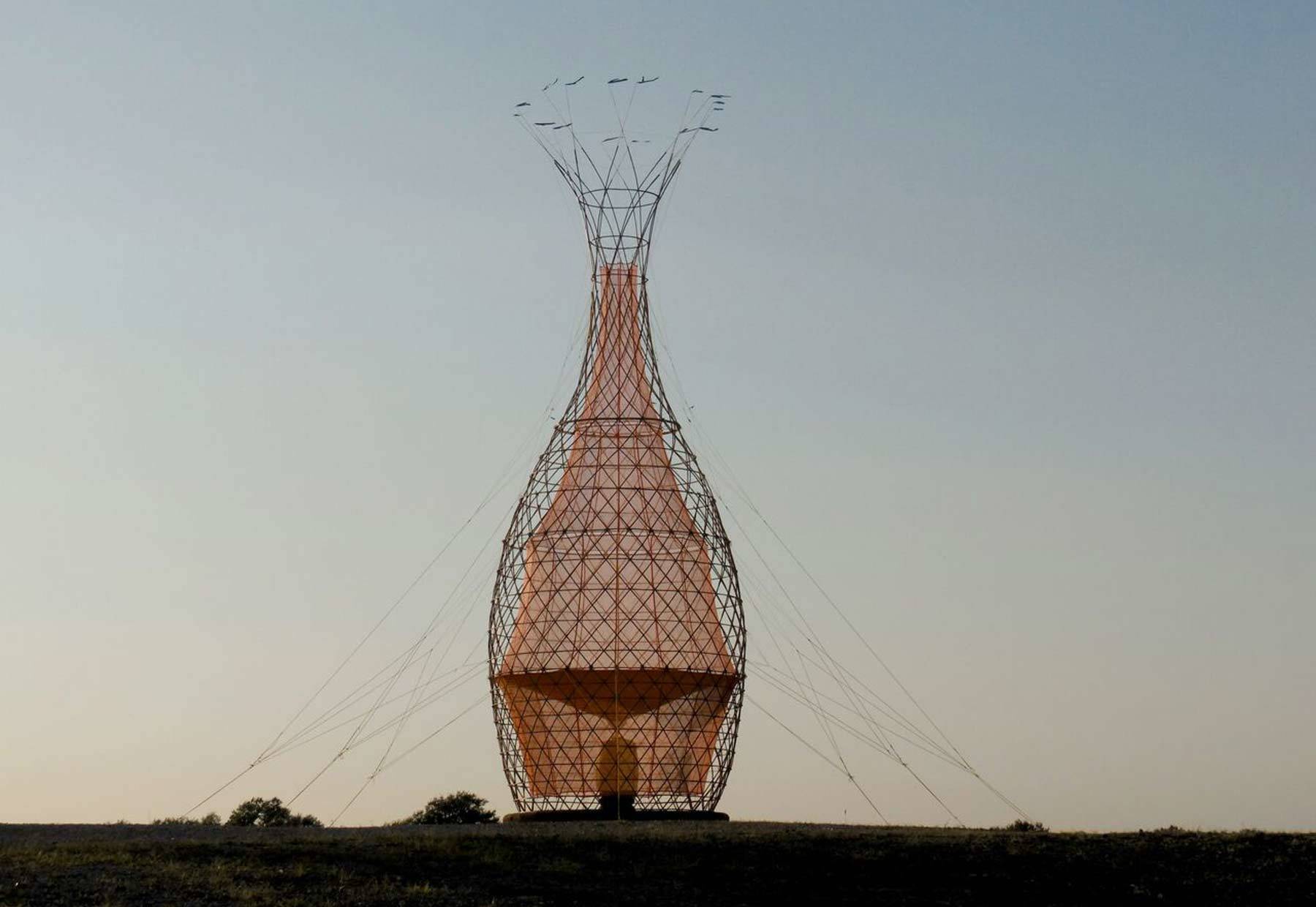ABOVE PHOTO: Stefano Boeri Architects, Italy, Bosco Verticale (Vertical Forest), Milan, Italy, completed in 2014. Courtesy of Stefano Boeri Architetti.
In the 1990s, a group of engineers ran into a problem with Japan’s high-speed train.
Traveling at speeds of up to 320 kilometers per hour through tunnels, the train created a thunderous boom upon exiting. The team member who solved this problem had a competitive advantage: He was a bird watcher. The engineer had the brilliant idea of making the train’s nose mimic the bill of the common kingfisher, making the train not only quieter, but also faster and safer.
Mimicking and learning from nature to make the world a better place is what PEM’s latest exhibition is all about. Wild Designs features not only bioinspired works by artists, but also projects and prototypes conceived by innovators who look to nature for new ideas and creative solutions to human challenges.
The exhibition explores biomimetic and bioinformed innovations in design and technology that either model or engage nature to generate novel products and more sustainable solutions. Included are design projects ranging from preliminary concepts to realized products and buildings, as well as mixed-media sculptures, artist installations and drawings.
Rather than exploring a product angle, works by the featured artists respond to nature or pose questions, such as Emily Longbrake’s exploration into the principles behind repeating patterns in nature, like fish scales and bird feathers. Her featured sculpture Origin/Insertion I, II & III investigates the collapsible skeletal structure of a snake.
"Deep observation of our natural world,” said Winchell, “can lead to the most amazing creative solutions."
Looking out her office window, exhibition curator Jane Winchell noted, “We’re surrounded by nearly 4 billion years of concept testing in nature. We have the opportunity to rethink our own problems and strategies for new ideas all the time, which is similar to what’s happening in nature. New ideas percolate through evolution. Put that into a time capsule of millions of years and you end up with loads of different solutions.”
As the Sarah Fraser Robbins Director of PEM’s Dotty Brown Art & Nature Center, Winchell hopes the exhibition will help people think differently through the lens of nature. Some designs will be as familiar as the hook and loop fastener, created by Swiss engineer George de Mestral, who went for a walk in the woods in 1941 and wondered if the burrs that clung to his socks — and his dog — could be turned into something useful. An air purifier made from a living plant and inspired by NASA research makes so much sense, as does a backpack designed to mimic sliding scales of a pangolin.


Sebastian Conran with Tony Prescott and Ben Mitchinson, Consequential Robotics, United Kingdom, MiRo, 2017, mixed media. Courtesy of Consequential Robotics.
MiRO, a personal companion robot resembles a small dog, has sensors based on 20 years of research on animal brains and behavior by U.K. scientists. Other featured projects will aid with things like energy conservation, architecture, agriculture and water collection.
Sebastian Conran with Tony Prescott and Ben Mitchinson, Consequential Robotics, United Kingdom, MiRo, 2017, mixed media. Courtesy of Consequential Robotics.
One area of products features Geckskin, a super adhesive based on the toe pads of geckos created by researchers at UMass Amherst. This inspired material allows for an index card piece to hold up 700 pounds without leaving behind a sticky residue. Scaling a building, like Spiderman, by wearing a pair of gecko-tape gloves may not be that far off.

The Warka Tower system mimics the behavior of beetles native to the Namib Desert in Africa by harvesting moisture directly from the air and storing it so that people living in remote places don’t have to walk miles to fulfill their basic need for water. The very idea of a house is upended with the Fab Tree Hab, a design solution created by a team formerly at the Massachusetts Institute of Technology that came up with the idea to grow homes from native trees.

Stefano Boeri Architects, Italy, Bosco Verticale (Vertical Forest) with cross-section views, Milan, Italy, completed in 2014. Courtesy of Stefano Boeri Architetti.
The structures are designed to also be edible, for their human inhabitants and for the wild creatures outside. In Milan, a studio led by Italian architect Stefano Boeri came up with the concept of Bosco Verticale, or Vertical Forest, as a way to combine high-density residential development with tree planting in city centers. Two residential towers host 15,000 plants, 4,500 shrubs and 800 trees.
Stefano Boeri Architects, Italy, Bosco Verticale (Vertical Forest) with cross-section views, Milan, Italy, completed in 2014. Courtesy of Stefano Boeri Architetti.
Fitting for an exhibition about nature, the show also moves outside when Sam Batchelor of Boston’s designLAB Architects comes to PEM to lead a graduate class from Mass College of Art and Design in a seven-week workshop to create a unique bioinspired structure that will open mid-August. The structure will remain for a year-long exploration by passersby along the museum’s Axelrod Garden Walkway.
Visitors will also find an interactive area called Nature’s Design Lab, a hands-on space to explore nature’s genius. The lab will integrate natural history collections, close observations of nature, design making, games and activities to illustrate and illuminate what nature can teach us about invention.
Keep exploring
Blog
Alone on an island
6 Min Read

PEMcast
PEMcast 10: Immersive experiences | Part 1
16 min listen

